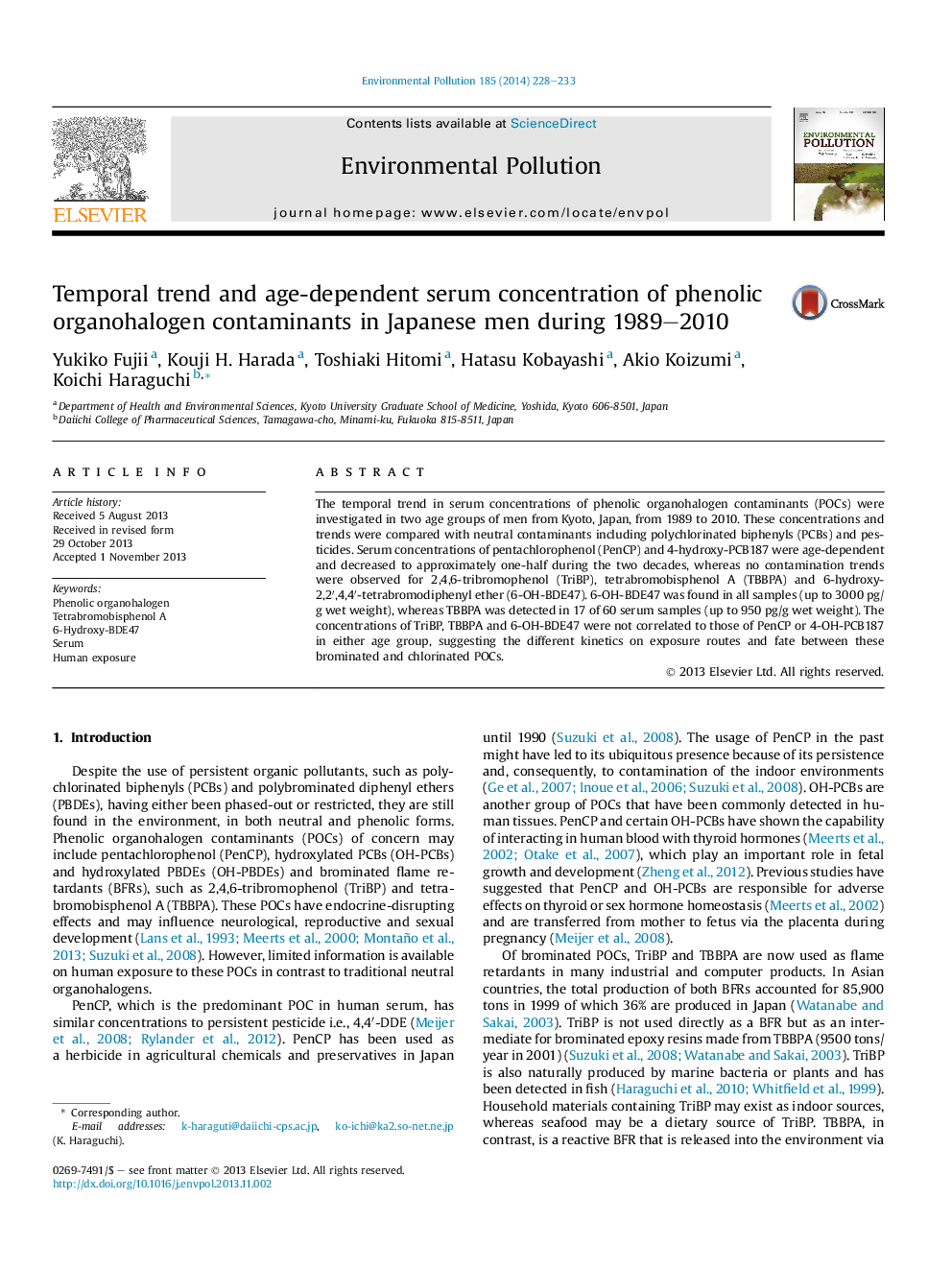| Article ID | Journal | Published Year | Pages | File Type |
|---|---|---|---|---|
| 6318231 | Environmental Pollution | 2014 | 6 Pages |
Abstract
The temporal trend in serum concentrations of phenolic organohalogen contaminants (POCs) were investigated in two age groups of men from Kyoto, Japan, from 1989 to 2010. These concentrations and trends were compared with neutral contaminants including polychlorinated biphenyls (PCBs) and pesticides. Serum concentrations of pentachlorophenol (PenCP) and 4-hydroxy-PCB187 were age-dependent and decreased to approximately one-half during the two decades, whereas no contamination trends were observed for 2,4,6-tribromophenol (TriBP), tetrabromobisphenol A (TBBPA) and 6-hydroxy-2,2â²,4,4â²-tetrabromodiphenyl ether (6-OH-BDE47). 6-OH-BDE47 was found in all samples (up to 3000Â pg/g wet weight), whereas TBBPA was detected in 17 of 60 serum samples (up to 950Â pg/g wet weight). The concentrations of TriBP, TBBPA and 6-OH-BDE47 were not correlated to those of PenCP or 4-OH-PCB187 in either age group, suggesting the different kinetics on exposure routes and fate between these brominated and chlorinated POCs.
Related Topics
Life Sciences
Environmental Science
Environmental Chemistry
Authors
Yukiko Fujii, Kouji H. Harada, Toshiaki Hitomi, Hatasu Kobayashi, Akio Koizumi, Koichi Haraguchi,
